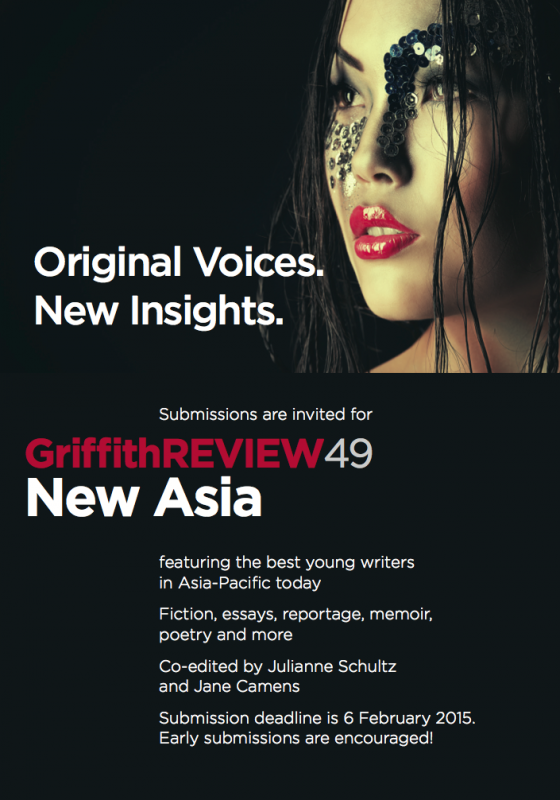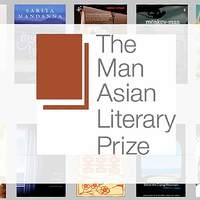Griffith Review: New Asia - seeks submissions from young writers in Asia-Pacific


Griffith REVIEW 49: New Asia will feature the best young writers in Asia-Pacific today through fiction, essays, reportage, memoir, poetry and more. Submit your work now!
Submission deadline is 6 February 2015. Early submissions are encouraged!
About the edition
Griffith REVIEW 49: New Asia will engage with contemporary Asian conversations, issues from our region, including identity, belonging, politics, economics, environment, culture and much more. New Asia seeks to identify the region’s new generation of writers who will be the agenda setters and chroniclers of the future, introducing them to readers beyond their national borders. New Asia will be published in association with Asia Literary Review.
Contributor eligibility
Submissions are invited from writers from the Asia-Pacific region* born in or after 1970. Contributors to this issue are likely already to have an impressive publishing record in their own country or elsewhere. Submissions must be in English. We accept and encourage quality translations in English from Asian languages. Some work may appear in the online edition in other languages.
* The authors will be citizens of an Asian country, but not necessarily residents (i.e. a Thai writer studying and living in Australia or the US would be eligible for consideration).
About Griffith REVIEW
Griffith REVIEW is a highly regarded quarterly publication from Australia featuring essays, reportage, memoir, fiction, poetry and artwork from established and emerging writers and artists. Each edition is developed around a contemporary theme designed to foster and inform public debate and to provide a bridge between the expertise of specialists and the curiosity of readers. Griffith REVIEW aims is to provide the opportunity for established and emerging writers, thinkers and artists to tease out complexity and contradiction and propose new ways of thinking and seeing.
Similar content
deadline
03 May 2016
deadline
20 Nov 2014
deadline
30 Apr 2015
posted on
06 Mar 2012
posted on
12 Nov 2012
from - to
25 Nov 2015 - 26 Nov 2015






